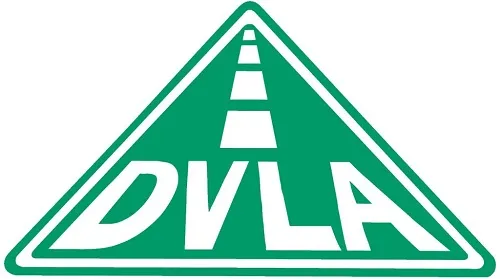Reclamet Limited
View ALL WASTE SERVICES
Reclamet Limited
View ALL WASTE SERVICES



Regularly Check Your Tyres – Especially in Winter
Performing a winter tyre check is crucial to ensure your tyres are in good condition and adequately prepared for cold and potentially icy or snowy conditions. Bearing in mind the time of year and the expense of Christmas, if you need to replace tyres but want to save money, visit our Tyre Bay, which is open from 8am to 5pm Monday through Friday and 8am to 12 pm on Saturday.
We offer a wide range of new, used, part-worn, and specialist tyres at competitive prices. Same-day delivery is available for many orders, depending on availability and the time of day ordered.
Here’s a checklist you can follow:
Tyre Tread Depth: Check each tire’s tread depth. Winter tires typically have deeper treads with specific patterns designed to provide better traction in snow and ice. However, you don’t have to have specialist winter tires.
You have to have legal treads and, where possible, a good tread depth.
The minimum tread depth in the UK is 1.6 mm, measured in three places across and around the tyre’s centre. However, many tyre manufacturers recommend a 3mm minimum to provide the most safety and grip in all weather conditions.
What are the UK legal tyre tread depths?
Cars, Goods vehicles, Trailers and caravans (UNDER 3,500kg): At least 1.6mm throughout a continuous band in the centre 3/4 of the tread and around the entire circumference of the tyre.
Most larger vehicles: At least 1.0mm throughout a continuous band across at least 3/4 of the breadth of the tread and around the entire circumference. The original tread pattern must be visible in the remaining quarter.
Motorcycles 50cc and over: At least 1.0mm throughout a continuous band across at least 3/4 of the breadth of the tread and around the entire circumference. The original tread pattern must be visible in the remaining quarter.
Mopeds and motorcycles under 50cc: The original tread pattern must be visible.
Tyre Pressure: Cold temperatures can cause tyre pressure to drop. Check the tyre pressure regularly, ideally when the tyres are cold.
Refer to the vehicle’s manual or the tyre manufacturer’s recommendations for the correct tyre pressure. Incorrect pressure can affect handling and traction.
Visual Inspection: Inspect the tyres for signs of damage, such as cuts, bulges, or punctures. Any tyre damage can compromise their performance, especially in winter conditions.
Spare Tyre: Check the spare tyre for proper inflation and ensure it’s in good condition. It’s often overlooked but essential in case of an emergency.
Wheel Alignment: If your vehicle pulls to one side or the steering wheel is off-centre, it may indicate a need for wheel alignment. Proper wheel alignment ensures that the tyres make optimal contact with the road.
Balance and Rotation: If you have yet to do so recently, consider having your tyres balanced and rotated. Properly balanced and rotated tyres wear more evenly, improving overall performance and longevity.
Valve Stems and Caps: Ensure the valve stems and caps are in good condition. These components help maintain tyre pressure and prevent dirt and moisture from entering the tyre.
Tyre Age: Check the manufacturing date on the sidewall of the tyres. Tyres can degrade over time, and if they are more than six years old, consider replacing them, even if the tread is still good.
Regular maintenance and checks ensure that your winter tyres are in optimal condition, providing the best possible performance and safety during winter driving conditions. Click here and fill out the form to check tyre availability.

Regularly Check Your Tyres – Especially in Winter
Performing a winter tyre check is crucial to ensure your tyres are in good condition and adequately prepared for cold and potentially icy or snowy conditions. Bearing in mind the time of year and the expense of Christmas, if you need to replace tyres but want to save money, visit our Tyre Bay, which is open from 8am to 5pm Monday through Friday and 8am to 12 pm on Saturday.
We offer a wide range of new, used, part-worn, and specialist tyres at competitive prices. Same-day delivery is available for many orders, depending on availability and the time of day ordered.
Here’s a checklist you can follow:
Tyre Tread Depth: Check each tire’s tread depth. Winter tires typically have deeper treads with specific patterns designed to provide better traction in snow and ice. However, you don’t have to have specialist winter tires.
You have to have legal treads and, where possible, a good tread depth.
The minimum tread depth in the UK is 1.6 mm, measured in three places across and around the tyre’s centre. However, many tyre manufacturers recommend a 3mm minimum to provide the most safety and grip in all weather conditions.
What are the UK legal tyre tread depths?
Cars, Goods vehicles, Trailers and caravans (UNDER 3,500kg): At least 1.6mm throughout a continuous band in the centre 3/4 of the tread and around the entire circumference of the tyre.
Most larger vehicles: At least 1.0mm throughout a continuous band across at least 3/4 of the breadth of the tread and around the entire circumference. The original tread pattern must be visible in the remaining quarter.
Motorcycles 50cc and over: At least 1.0mm throughout a continuous band across at least 3/4 of the breadth of the tread and around the entire circumference. The original tread pattern must be visible in the remaining quarter.
Mopeds and motorcycles under 50cc: The original tread pattern must be visible.

Tyre Pressure: Cold temperatures can cause tyre pressure to drop. Check the tyre pressure regularly, ideally when the tyres are cold.
Refer to the vehicle’s manual or the tyre manufacturer’s recommendations for the correct tyre pressure. Incorrect pressure can affect handling and traction.

Visual Inspection: Inspect the tyres for signs of damage, such as cuts, bulges, or punctures. Any tyre damage can compromise their performance, especially in winter conditions.
Spare Tyre: Check the spare tyre for proper inflation and ensure it’s in good condition. It’s often overlooked but essential in case of an emergency.
Wheel Alignment: If your vehicle pulls to one side or the steering wheel is off-centre, it may indicate a need for wheel alignment. Proper wheel alignment ensures that the tyres make optimal contact with the road.
Balance and Rotation: If you have yet to do so recently, consider having your tyres balanced and rotated. Properly balanced and rotated tyres wear more evenly, improving overall performance and longevity.
Valve Stems and Caps: Ensure the valve stems and caps are in good condition. These components help maintain tyre pressure and prevent dirt and moisture from entering the tyre.
Tyre Age: Check the manufacturing date on the sidewall of the tyres. Tyres can degrade over time, and if they are more than six years old, consider replacing them, even if the tread is still good.
Regular maintenance and checks ensure that your winter tyres are in optimal condition, providing the best possible performance and safety during winter driving conditions. Click here and fill out the form to check tyre availability.



